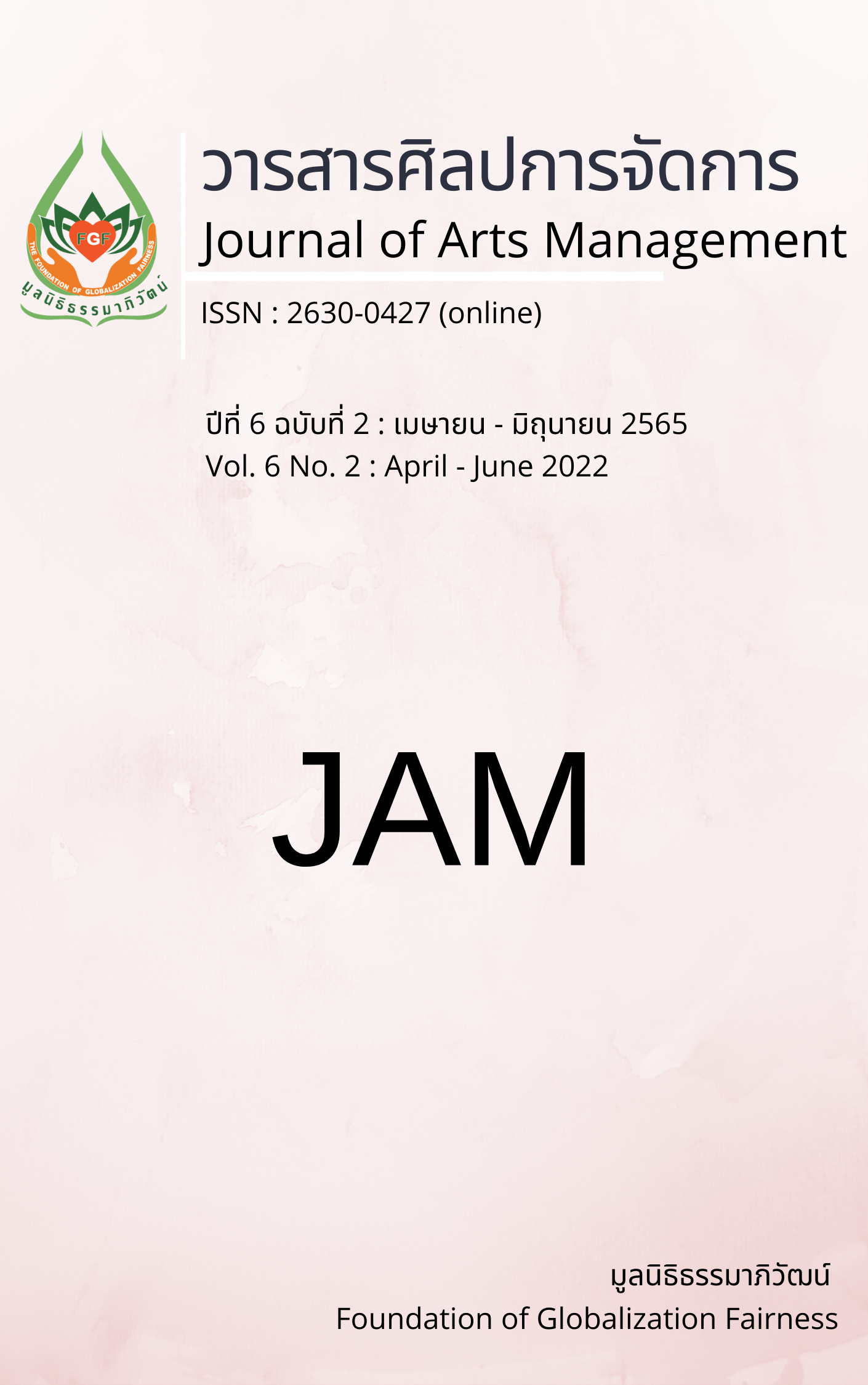Development of Additional Curriculum on E-Sports of the Science and Technology Learning Strand for Mathayomsuksa 3 Students under Nakhon Phanom Secondary Education Service Area Office
Main Article Content
Abstract
The objectives of this study were to survey curriculum demand, to develop a curriculum, and to study the effectiveness of the developed curriculum in the efficiency of the curriculum in accordance with the 70/70 criteria, to compare students’ learning achievement, students’ practical skills, and student satisfaction towards the author’s additional curriculum on E-Sports for the science and technology learning strand for Mathayomsuksa 3 students under the Nakhon Phanom Secondary Education Service Area Office. The survey of needs for additional curriculum on E-Sports from 399. The developed curriculum was then being implemented with a sample group of 35 people. Lastly, the curriculum was evaluated and improved. The tools employed in data collection consisted of an interview form and a survey form.
The results were as follows: 1. A survey of additional curriculum on E-Sports was at a high level. 2. The author’s additional curriculum on E-Sports for the science and technology learning strand for Mathayomsuksa 3 students under the Nakhon Phanom Secondary Education Service Area Office comprises: rationale, curriculum objective, learning contents, learning outcome, curriculum structure, subject description, learning management approaches, media and learning resources, and measurement and evaluation. As per the evaluation by experts, the appropriateness of the curriculum is at the highest level. 3. The efficiency of the developed additional curriculum on E-Sports is at 83.77/71.71, which was higher than the 70/70 criteria. 4. Students’ learning achievement after studying with the additional curriculum on E-Sports was higher than that before studying at the .01 level of statistical significance. 5. The practical skills of students who studied with the additional curriculum on E-Sports were at 80.89 percent, which was higher than the 70 percent criteria. and 6. Student satisfaction with the author’s curriculum on E-Sports was at a highest level.
Article Details

This work is licensed under a Creative Commons Attribution-NonCommercial-NoDerivatives 4.0 International License.
Views and opinions appearing in articles in the Journal of Arts of Management It is the responsibility of the author of the article. and does not constitute the view and responsibility of the editorial team I agree that the article is copyright of the Arts and Management Journal.
References
Charoenlarp, P. (2018). Value and economics value of eSport[Independent Studies, Bangkok University].
Charoenwanit, S. (2014). Game Addiction Behaviors: Impacts and Preventions. Thai Science and Technology Journal, 22(6), 871-879.
Horrayangkun, W. (2008). Human Behavior and Environment behavioral basis for design and planning (6th ed.). Chulalongkorn University Printing House.
Kampiranon, S. (2020). The direction of e-sports in Thailand. Office of Academic Affairs, Secretariat of the Senate, 10(18), 2-3.
Lamkusolkit, R. (2008). Quality of life of children and youth addicted to games in Nakhon Phanom Province. Nakhon Phanom University.
Lohalaksanadech, S., Kaewchuay, S., Inprom, P., & Thithathan, S. (2021). The Synthesis of Esports Administration in Thailand. Journal of Health, Physical Education and Recreation, 47(1), 150-160.
Nagaesamakkhiwittaya School. (2020). Academic Year Action Plan 2020. Nagaesamakkhiwittaya School.
Office of Academic Affairs and Educational Standards. (2008). Indicators and content of science learning. according to the basic education core curriculum 2008. Agricultural Cooperative Association of Thailand Printing House.
Office of the National Health Commission. (2017). A study of the effects of e-sports on children's health and formation of shared responsibility models of related agencies. Office of the National Health Commission.
Owatsatit, P. (n.d.). Growth factors of the game industry at national and global levels. https://www.depa.or.th/th/article-view/growth-factor-gaming-industry
Personal Management Center. (2021). Personal management center for the secondary educational service area office Nakhon Phanom. https://sesaonkp.org/pmc
Phromwong, C. (2008). Collection of subjects on curriculum development and teaching materials (2nd ed.). Sukhothai Thammathirat Open University.
Prachsriphum, P. (2018). Factors influencing intention to adopt Esoprts[Master’s Thesis, Thammasat University].
Sinthaphanon, S. (2015). Learning management of new era teachers. to develop skills of learners in the 21st century. 9119 Printing Techniques.
Udomsuk, K. (2021). The communications for development Esports in Thailand. Dhurakij Pundit Communication Arts Journal, 15(1), 128-160.
Wachindanet, J. (2013). A model of teaching practical skills in sewing with fancy pillow activity for upper primary school students. Chulalongkorn University.
Wongyai, W. (1992). Curriculum development process and practical instruction. Suwiriyasan.
